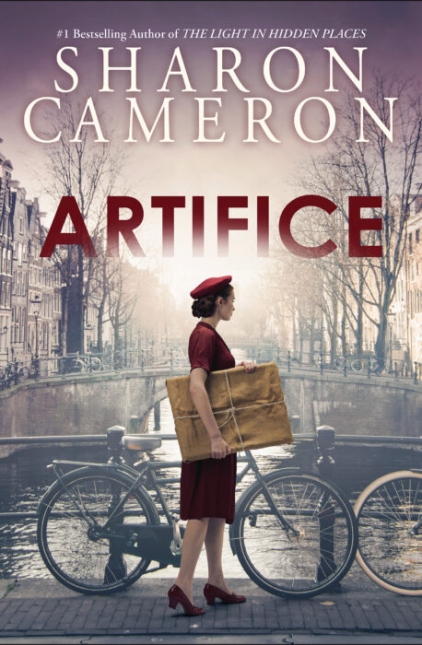A Dutch teen risks her life selling forged art to the Nazis.

Amsterdam, September 1943: Isa de Smit has learned to walk the fine line required to stay beneath notice during the Nazi occupation. With her mother dead and her father retreating more and more into his art, it falls on the 18-year-old to keep her family afloat. Hiding in plain sight, Isa and her father live above the Gallery de Smit — long since closed for displaying so-called degenerate works.
But hiding doesn’t fill the ration books or generate the Reichsmarks Isa needs to pay taxes on the building. Which is how she finds herself at the former Goudstikker auction house selling a forged Rembrandt sketch to the Germans. If the Dutch resistance finds out, she’ll be shot as a collaborator. If the Third Reich realizes they paid for a forgery painted by Isa’s talented father, her fate will be much worse.
Isa remembers the artists who used to call the gallery home. The ones forced into hiding. The ones who died working alongside the resistance. The ones who were deported — like Moshe, gone before Isa realized he wouldn’t come back, before she understood the importance of the family heirloom he hid in the gallery, telling her, “Promise not to let them have it. They take our city, they take our country, but they cannot take this…It is Dutch, Isa. It is who we are.”
It is a Vermeer. A real one. It is also a painting she knows will not fall into Nazi hands because it’s been concealed behind a false wall for three years and will stay there until the war is over and it’s safe for it to be taken out. Still, if forgeries are being passed so successfully, why shouldn’t Isa sell more? Shouldn’t the Nazis suffer for everything they’ve stolen from her beautiful country?
But it’s a dangerous game. A mad one. And yet, when her childhood friend Truus asks Isa for help funding the resistance’s efforts to smuggle Jewish babies out of the country, she wonders to herself:
“What if she could do it one more time? Sell them one more fake and make enough money to give to Truus. What if she used the Nazis’ own ignorance — their greed — to trick them into paying for the rescue of the very children they were trying to kill?”
Sharon Cameron’s gripping Artifice is filled with suspense as Isa tries to outwit the Germans, stay on the right side of the resistance, and navigate a working relationship with Michel, a Nazi who can help with her forgery scheme but who needs something in return. Throughout, Isa narrates the story with an artist’s eye, walking past “burnt-umber roof tiles. Wine-purple pansies spilling from their pots. The clean lead-white of a grocer’s empty shelves.”
Inspired by true events and people, the novel features a helpful introduction to real-life Vermeer forger Han van Meegeren — one of whose fakes ended up in the hands of Hermann Göring — and Reformed Teacher Training College director Johan van Hulst, who saved 600 Jewish children in the Netherlands before being forced to flee the country himself.
In fictionalizing the lives of these unlikely men and others, Cameron has crafted a tale of desperation and, ultimately, hope. As she says in her author’s note, “A path of beauty can intersect with a road of ugliness to make…an incongruous crossroads,” one that, under the right circumstances, can remind characters like Isa (and readers) that true beauty is worth protecting.
Emma Carbone is a librarian and reviewer. She has been blogging about books since 2007.

